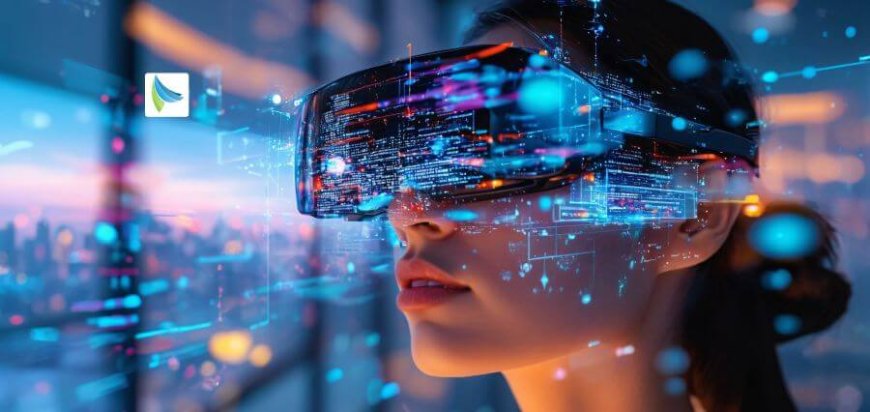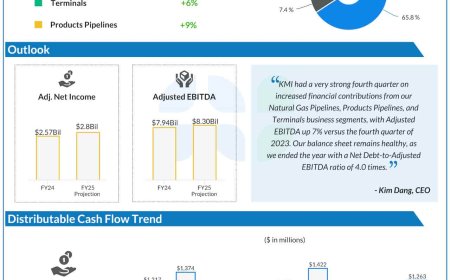How Immersive Technology is Shaping the Future – The Rise of the XR Metaverse
This now comes under the big term known as extended reality, or XR, where virtual, augmented, and mixed reality are covered. Gone are the days when this was gaming or even entertainment; it has rather emerged to become the new force shaping people’s ways of work, socialization, and interacting with digital environments. At its core, […] The post How Immersive Technology is Shaping the Future – The Rise of the XR Metaverse appeared first on Insights Success.

This now comes under the big term known as extended reality, or XR, where virtual, augmented, and mixed reality are covered. Gone are the days when this was gaming or even entertainment; it has rather emerged to become the new force shaping people’s ways of work, socialization, and interacting with digital environments. At its core, there is an XR metaverse; that is to say, a virtually infinite interconnected world of virtual reality that harmoniously puts the physical and the digital together in seamless seamlessness.
Understanding the XR Metaverse
The XR metaverse is defined as the shared virtual space that is generated by the fusion of physical and virtual reality through the use of the XR technologies. Unlike the digital platforms, the metaverse will allow users to be immersed fully and in real time with 3D environments and other participants.
This is the metaverse that presents a string of interlinked spaces, which will be accessible from the comfort of devices such as VR headsets or AR glasses or even smartphone. Think virtual offices or immersive classrooms, simulated travel, and digital art galleries. It would help to rethink all these mundane things.
Building Blocks of the XR Metaverse
The XR metaverse is being driven through many technological breakthroughs, including:
- Virtual Reality: This has therefore emerged with Virtual Reality, where for example, objects can be interacted with as participants would if they were there in such environments.
2. Augmented Reality: In augmented reality, however, digital content overlays over the real world and improves real-world physical surroundings through interacting elements.
3. Mixed Reality: This connects physical and virtual worlds for interaction in real-time.
4. AI: AI allows realism by creating reactive environments and avatars with predictiveness that look almost lifelike.
5. Blockchain: Distributed ledgers are facilitated for the metaverse for ownership, transaction, and identity verifications.
6. 5G and Edge Computing: Ubiquitous and edge computing allows for immediate experiences with help from fast networks.
Impactful Use Cases for the XR Metaverse
Industries changed because of XR technology- unthinkable just a short while ago. For example:
Metaverse Classroom
The Metaverse provides an immersive space where learners can take history to places, produce chemistry experiments in the virtual, or immerse themselves deep into the ocean-all from their desks. These immersion conditions with learners improve the level of understanding and retention.
Collaborative Workplace
The XR metaverse revolutionizes the remote working experience. Workers can connect to colleagues and clients through 3D virtual offices. Tools such as virtual whiteboards, shared environments, and tools of that nature can enable the transitions between physical and digital collaborative spaces to be improved in terms of creativity and productivity.
Healthcare
Doctors and surgeons use XR to train and simulate surgeries. Virtual operating rooms, interactive anatomy lessons, and AR-assisted surgeries are used to improve medical outcomes and minimize risks.
Retail and E-commerce
Virtual storefronts of the XR metaverse can be shopped from home, where one can try on and buy the product. Augmented reality allows people to see exactly how furniture looks at home or how clothes fit or drape on a person in real-time.
Entertainment and Social Interaction
Virtual concerts, immersive films, and social VR platforms are some of the ways the metaverse is changing the entertainment space.
Family and friends are closer than ever. In a nut, distance has stopped; no longer require one. Now connect up in virtual space through games, film watching, or listening to a performance.
Economics of the Metaverse
The XR metaverse is opening new economic opportunities and, thereby, a “metaverse economy.” Valuable assets include digital real estate, virtual goods, and NFTs or non-fungible tokens. Brands and creators can monetize virtual experiences; businesses find new revenue streams in immersive advertising and branded environments.
Ease Ethical and Practical Issues
The potential of the XR metaverse is enormous, but with its emergence come some issues that must be resolved:
- Privacy and Security: Protect user data and digital identity in immersive spaces.
- Accessibility: Ensure that metaverse technologies are accessible and inexpensive to all users.
- Digital Addiction: Harmonize the amount of time spent in virtual spaces with the number of interactions in the real world.
- Environmental Impact: Reduce the energy intake of servers and devices that will run the metaverse.
- Regulation and Governance: Introduce laws on ethics, intellectual property rights, and the safety of the online environment within the metaverse.
Conclusion
This means the XR metaverse is more an experience and a new paradigm toward perceiving and engaging in interaction with our world than just another technological trend. The emergence between the physical and digital worlds is opening space for innovations, cooperation, and creativity that never existed before. Now, as much as we acknowledge this newfound perspective, we still have to pursue the dream of an accessible and sustainable future where, with the use of immersive technologies, life will become more convenient to get across to one another’s way of living closer to the very best that one needs.
The post How Immersive Technology is Shaping the Future – The Rise of the XR Metaverse appeared first on Insights Success.











































